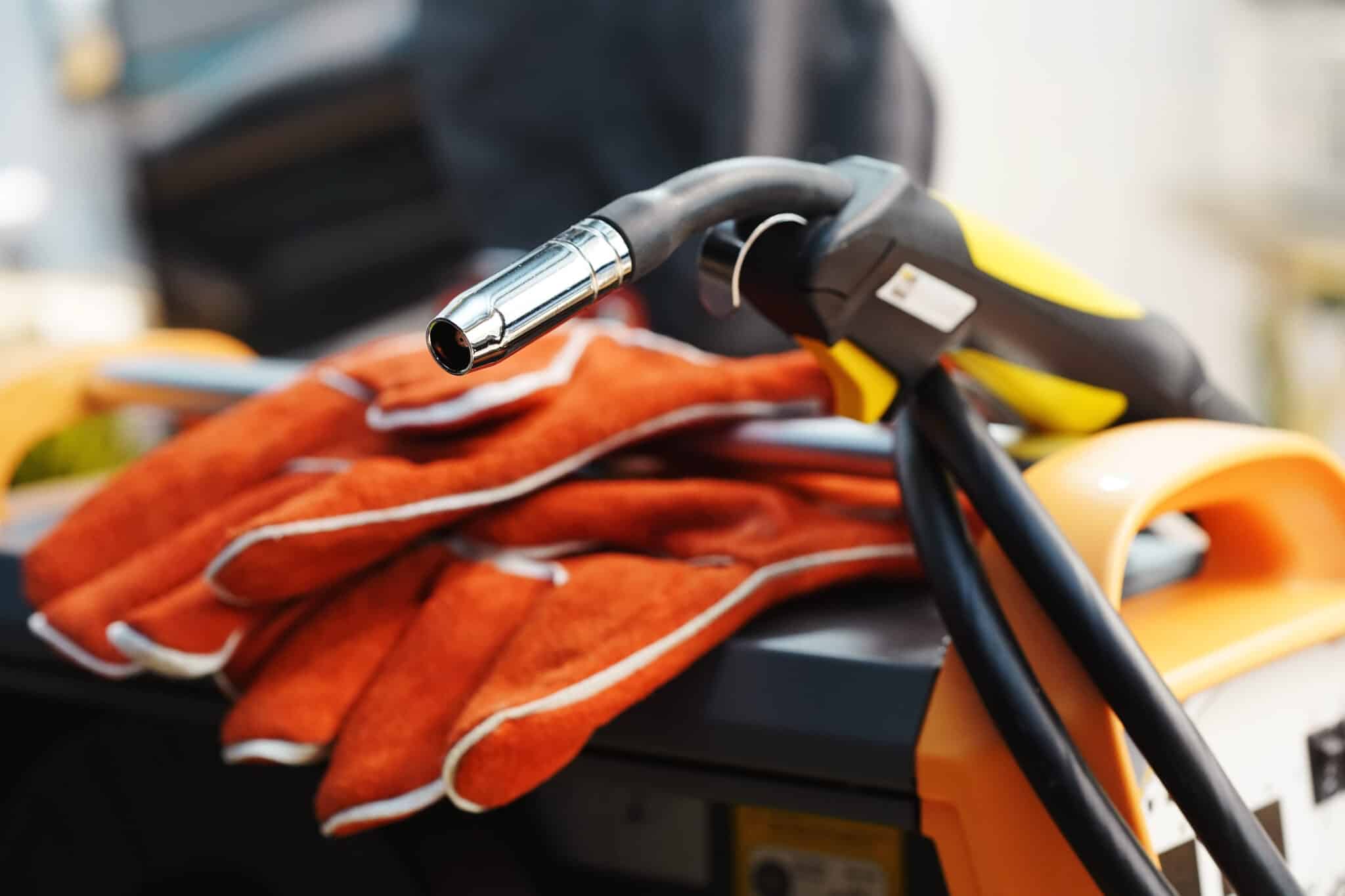
MIG welding, also known as Metal Inert Gas welding, is a cornerstone in metal fabrication and is known for its versatility and accessibility. MIG welding is widely used in various industries due to its speed, efficiency, and ease of use. This makes it the preferred method for both professional welders and DIY enthusiasts alike. Below, we’ll discuss the essentials of MIG welding and go over how it can help in your next metal fabrication project.
MIG welding, also known as Metal Inert Gas welding, is a highly versatile and widely used arc welding process in the metalworking industry. It offers a range of benefits that contribute to its popularity and widespread application. In this semi-automatic or automatic process, a continuous, consumable wire electrode and shielding gas are fed through a welding gun, creating a strong and durable bond. This method allows for precise control over the welding parameters, resulting in high-quality welds with excellent strength and integrity.
MIG welding’s simplicity and convenience have made it a go-to choice for hobbyists and small-scale metalworkers. With the right equipment and proper training, enthusiasts can join metals, create intricate metalwork, and bring their artistic visions to life. From sculptures to custom fabrication, MIG welding opens a world of creative possibilities.
The MIG welding process begins with a deep clean of the metals. Any rust, oil, or dirt on the surface can disrupt the welding process and result in a weak bond. Once clean, the pieces to be welded are secured together using clamps or jigs. Next, a MIG welding machine is set up with the appropriate wire electrode and shielding gas for the welded metal.
When the power source is turned on, an electric arc is created between the wire electrode and the base metals. The heat generated by the arc melts the metal, creating a pool of molten material that fuses as it cools. The shielding gas, typically argon or a mix of argon and carbon dioxide, protects the weld from external contaminants.
The operator controls the welding gun’s movement, guiding it along the seam to create a consistent and smooth weld. The process continues until the desired length or shape is achieved. Once completed, the welded piece is allowed to cool before it is cleaned and inspected for quality.
These two techniques refer to the direction in which the MIG gun is moved during welding. In forehand welding, the MIG gun moves in a forward motion, with the electrode following behind. This technique is typically used for thin materials and allows for better control of heat input. On the other hand, backhand welding involves moving the MIG gun backward while directing the arc toward the weld joint. This method is usually used for thicker materials and provides deeper penetration, making it suitable for welding joints with greater thickness.
MIG welding is known for its high speed compared to other welding techniques. It is important to move at the right speed while welding based on the thickness of the metal and the wire size. Moving too quickly can result in a shallow weld while moving too slowly can cause burn-through or distortion.
Depending on the type of joint and metal being welded, different welding patterns can be used to achieve a strong and aesthetically pleasing weld. Some common patterns include the “whip” pattern, where the MIG gun is moved in a zigzag motion, and the “weave” pattern, where the MIG gun is moved side to side while maintaining a consistent distance from the weld joint. The right pattern for your project depends on several factors, including the type of metal, thickness, and joint configuration.
Before fully welding a joint, it is common practice to tack or temporarily attach the two pieces of metal. Tacking ensures proper alignment and helps prevent any movement during the welding process, resulting in a stronger weld.
MIG Welding offers numerous advantages due to its unique characteristics. However, like any welding technique, it also has its limitations. Here are some of the advantages and limitations of MIG Welding:
Additionally, industries requiring high-precision welding, such as aerospace and automotive manufacturing, may prefer alternative methods like TIG (Tungsten Inert Gas) welding, which offers greater control and accuracy, especially when working with delicate materials.
MIG Welding is particularly prevalent in several industries, each benefiting from its unique advantages.
While it may not be ideal for every situation, MIG Welding is a valuable tool in many industries.
Have a pipe welding job? We can help. We have a selection of pipe fitting tools that provide pipe welders with ease and efficiency for their welding projects. Whether you’re a professional welder or just have a DIY project, check out our pipe welding tools today!
© 2023 H&K Fabrication. All rights reserved. E-Commerce Website Design & E-Commerce PPC by Ranksey